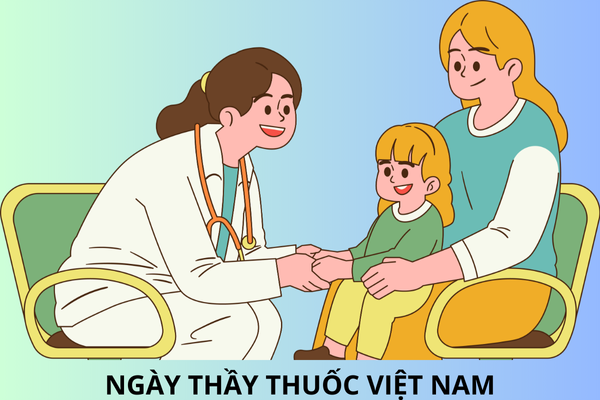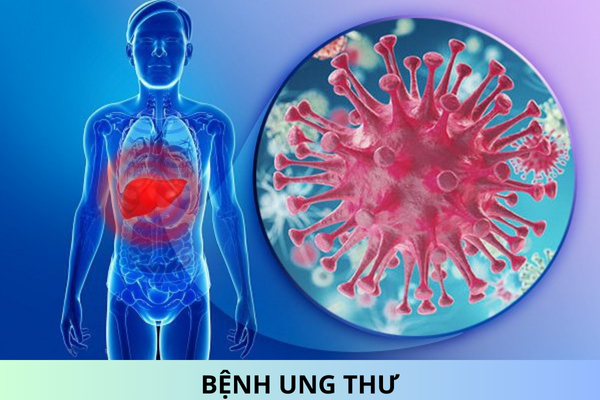Disinfection process on ships to prevent and control infectious diseases in Vietnam
Please ask: What is disinfection process on ships to prevent and control infectious diseases in Vietnam? Pleae advise.
Pursuant to Section V of the Guidelines for disinfection of port areas and ships in prevention of infectious diseases, issued together with Decision 5787/QD-BYT in 2021 of the Ministry of Health, stipulating the sterilization process on ships to prevent infection, against infectious diseases as follows:
Information collection and processing in Vietnam
- Collect information from port authorities, port operators, representatives of shipping lines, ship owners, owners of means of transport, national single-window portal... on quantity, number, owner or operator onion:
+ Shipping line, departure time, estimated time of arrival, number of passengers, crew.
+ Departure port (region, country with epidemic or being monitored)
+ List of passengers and health conditions, especially those who are sick or suspected of being ill and people around within 2 meters.
+ List of crew members, especially paying attention to staff who are in direct contact with sick or suspected patients.
- Request relevant agencies to put ships into quarantine positions or isolation areas for disinfection.
- Identify areas on ships that need to be disinfected; chemicals, sterilization methods for each area.
Preparatory work in Vietnam
- Notify relevant authorities and responsibilities (port authorities, ship owners or representatives, ...) to coordinate to ensure the safety of people and equipment that may be damaged influence during isolation and sterilization.
- Arrange medical treatment staff according to actual needs and professional requirements.
- Personal protective equipment, antiseptic solution (60-80% alcohol concentration for hand hygiene and at least 70% alcohol concentration for equipment cleaning) and necessary equipment and tools.
- Equipment and chemicals suitable for sterilization techniques.
- Waste bins and bags.
- Tools are prepared in the toiletry bag:
+ Garbage bags and masks with strings.
+ Mop, toilet paper and/or absorbent material.
+ Chemical sprayer.
+ Specialized cleaning cloth.
- Means of transporting equipment, tools, chemicals and infectious waste according to biosafety regulations.
Disinfection in Vietnam
3.1. Disinfection requirements on ships
- After the passengers disembark from the boat, the medical treatment staff board the ship to carry out disinfection.
- In order for the sterilization to be effective, it is often necessary to perform a thorough cleaning, removing any objects and garbage before disinfecting; must remove vomit, secretions, clean stains before conducting disinfection.
- Wastewater from the cleaning process must be treated as infectious wastewater.
- Wipes and utensils in different areas must be used separately; Disposable cleaning equipment should be used.
If disposable cleaning equipment is not available, the cleaning material (cloth, sponge, etc.) should be placed in a disinfecting solution containing active chlorine for a contact time of at least 30 minutes. Wipes can be washed at 90°C and can then be reused. If both solutions are not available, the material should be discarded and not reused.
- It is necessary to open the natural ventilation system during the sterilization process. In cases where the windows cannot be opened and the ventilation system operates in a closed loop, the air circulation should be turned off and the system must operate with a fresh, clean air supply. Another option that can be used after expert technical advice: place temporary high-efficiency particulate air (HEPA) filters through vents and exhaust in rooms where patients or use Portable HEPA air filtration systems are located near where the patient has been identified.
- Carry out disinfection spraying on the principle from inside to outside, from top to bottom, should start from the cleanest areas, proceed to the dirtiest areas (patient areas).
- Spraying disinfectants on the deck from front to back, followed by cleaning and disinfecting high-risk areas (seating area of sick people, suspected infection and surrounding areas, toilet used by the patient,...), then again spray disinfectant in the opposite direction.
- Disinfectant chemicals suitable for risk areas and areas where disinfection is performed.
- Cleaning tools should be wetted with disinfectants when cleaning surfaces, allowed to remain for the period recommended by the manufacturer and then discarded.
- In places that cannot be sprayed, use the wiping method; Using different cleaning tools (cloths and rags) for different areas of the vessel should be different colors to differentiate and reduce cross-contamination.
3.2. Perform disinfection
3.2.1. Passenger compartment and food processing
- Areas of frequent contact with passengers and other hard surfaces on board such as walls, windows, door handles, door bars, seats, handrails, table tops, light switches, faucets, elevator buttons,... Clean environmental surfaces with water and ordinary detergents, and at the same time wipe disinfectants containing active chlorine with a concentration of 0.1% or an antiseptic solution (with at least 70% alcohol concentration) for 30 minutes or disinfecting chemicals as prescribed by the Ministry of Health or the manufacturer.
- Vomiting, body secretions: If on the surface, it should be carefully removed with a towel and safely disposed of immediately as infectious waste.
- Waste treatment: comply with regulations for infectious waste.
- Bathrooms and toilets in medical areas, isolation or quarantine areas.
+ Disinfect by spraying or wiping a disinfectant containing active chlorine with a concentration of 0.1% for at least 30 minutes or a disinfectant according to the regulations of the Ministry of Health or the manufacturer.
Surfaces should be rinsed with clean water after 30 minutes of chlorine exposure.
+ Specialized toilets should be used for suspected and confirmed cases. If it is not possible to provide separate toilets for patients and roommates, shared toilets should be cleaned and disinfected at least twice daily.
- Public toilets, sinks and other sanitary facilities: surfaces that come into contact with hands (e.g. shower handrails and toilet facilities used by many people) must be carefully disinfected. kidney. Consider using a disinfectant containing active chlorine at a concentration of 0.1% for 30 minutes, or a disinfectant as specified by the Ministry of Health or by the manufacturer.
- Chairs, sofas, wall coverings:
+ Must be thoroughly disinfected by spraying or wiping with an appropriate bactericidal disinfectant.
Note that chlorine bleach can damage textiles. Maybe an antiseptic solution (with at least 70% alcohol content) for 30 minutes. Then let it air dry in the sun if possible.
+ Other disinfectants can be used as prescribed by the Ministry of Health or by the manufacturer.
+ Do not ignore recreational facilities such as outdoor seats.
- Carpets and furniture:
Should be steam cleaned and then disinfected. Steam cleaning is an effective method for cleaning soft surfaces such as carpets and curtains. However, steam cleaning is only one method of disinfection, as it is difficult to achieve high enough temperatures in soft furnishings. It is possible that steam cleaning is combined with other methods.
+ Can disinfect solution (with at least 70% alcohol content) for 30 minutes.
+ Other disinfectants can be used as prescribed by the Ministry of Health or by the manufacturer.
- Laundry from the bedrooms of suspected cases and contacts should be treated as infectious, in accordance with the outbreak management plan provided on board for communicable diseases.
+ All people who come into contact with soiled linen of a suspected case of infectious disease must wear protective clothing, including heavy gloves, face mask, eye protection (face visor/goggles), long-sleeved gown, apron (if the gown is not liquid resistant), closed boots or shoes before touching any soiled fabric.
Any object on the bed linen must be removed and disposed of as infectious waste.
Laundry should be transported to the laundry area in separate trolleys in sealed bags as for infectious waste.
+ Dirty laundry is washed and treated separately from other items, not coming into contact with any surface in the laundry area.
- Catering utensils from holds of suspected cases and contacts should be treated as potentially infectious, in accordance with the outbreak management plan provided on board for diseases other infectious. If dishes and cutlery are not used, then after the meal is completed, serving trays, dishes and cutlery should be transported to the dishwashing area in a bag, then rinsed and disinfected at 77°C or higher for at least 30 seconds and then air-dried.
- Food preparation area: if there is an outbreak on the ship, disinfect the entire food processing area with a solution of active chlorine with a concentration of 0.1% with a minimum exposure time of 30 minutes or disinfecting chemicals as prescribed by the Ministry of Health or the manufacturer, then wipe with clean water.
3.2.2. Disinfect the area with electronic equipment
- Using chemical cleaning method; Do not use high-pressure sprayers, or foggers, to spray directly into areas with electronic equipment. After wiping with a cloth impregnated with chemicals, use a clean cloth to wipe it to avoid chemical deposition.
- Can be used with an antiseptic solution containing at least 70% alcohol or disinfectant according to the regulations of the Ministry of Health or the manufacturer.
- Disinfection of areas with electronic equipment should be performed by well-trained disposal personnel.
3.2.3. Disinfect the cargo compartment
- It is recommended to use the disinfection spray method in a closed loop. Disinfection must be done from inside to outside, from top to bottom, from left to right, from back to front.
- Use a disinfectant containing active chlorine with a concentration of 0.05% for 30 minutes, or a disinfectant according to the regulations of the Ministry of Health or the manufacturer's...
- After spraying the cargo hold, close the door and spray the surface of the door, stairs or forklift.
3.3. Waste treatment: comply with regulations for infectious waste.
Finish processing and reporting in Vietnam
- Disposal staff remove and collect protective gear and garbage into medical waste bins according to regulations.
- Disinfect hands with an antiseptic solution containing 60-80% alcohol and disinfect equipment with an antiseptic solution containing at least 70% alcohol.
- Inform the representative of the shipping company that the disinfection work is completed. Vessels can be put into normal use after the chemical storage time has expired (as recommended) and the certificate is issued to the representative of the shipping company.
- Report to the shift leader, the head of the department and the leader after completing the medical treatment.
Best Regards!











